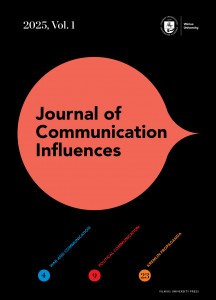Journal of Communication Influences, Vol. 1
Journal of Communication Influences, Vol. 1
Journal of Communication Influences, Vol. 1
Leidykla
Kalba:
anglų
Viršelis:
minkštas
Metai:
2025
ISSN:
3030-2617
Formatas (aukštis x plotis):
17,0x24,0
Puslapių skaičius:
35
8.39€
Kiekis
-
+
Communication seeks effectiveness, and effectiveness of communication means reaction (and influence). Today, we live in a mediatized world. This means that communication is becoming a universal tool for the arts, politics, and war. The first volume of the “Journal for Communication Influences” presents a broad spectrum of reactions to topical processes in the global information space.
After starting the full-scale invasion of Ukraine in February 2022, Russia is now hypocritically talking about peace. This shows that the Kremlin, not for the first time, is living in fantasies of its own parallel world. Unfortunately, these fantasies have real consequences, including the war. Olha Sushkevych, in her article, explores manipulations of Russia about the topic of ‘peace’, and how the Kremlin uses it for its own information warfare.
Political communication becomes harsher and harsher. Simultaneously, we are facing a global decrease in democracy. In this issue of the Journal, two texts analyze these processes.
Brock Mays examines Donald Trump’s rhetoric in the 2024 electoral campaign. The author clearly sees the use of different propaganda techniques in the construction of narratives, which contributed to Donald Trump winning a second term in the White House.
Belarus also conducted an electoral campaign at the beginning of 2025. This campaign, and the election that followed, were more than predictable. Dictator Alexander Lukashenko has been ruling Belarus over the past three decades. Elections in this country are merely political spectacles. However, any spectacle requires its own play or plot. Kiryl Kascian explores the Lithuanian motives in the so-called pre-electoral rhetoric of the ‘irreplaceable’ head of Belarus.
During the past decades, the Kremlin (or Russian) propaganda has become a significant headache not only in Eastern Europe but also in Europe as a whole. There are no tragic events that the Kremlin propaganda does not try to use as a ‘hot potato’. Valius Venckūnas is analyzing how the Kremlin propaganda media covered the tragic incident in the swamps of Pabradė Training Area (Lithuania) when four U.S. soldiers perished.
Finally, Viktor Denisenko tries to show how the areas of fantasy, popular culture, and propaganda are connected in the field of the Kremlin’s communication influence. It is still a grey area that needs more attention, especially in the countries chosen by Russia as a target of information warfare.
We hope that this first volume of the “Journal for Communication Influences” will show you different aspects of modern information space.





